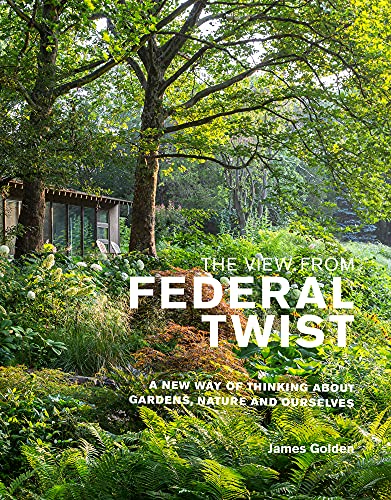 About a year ago, I watched a webinar by James Golden highlighting his garden in New Jersey. Located on a ridge above the Delaware River, I was mesmerized by his photographs, especially his ability to take the best advantage of lighting, without resorting to any noticeable tricks or enhancements.
About a year ago, I watched a webinar by James Golden highlighting his garden in New Jersey. Located on a ridge above the Delaware River, I was mesmerized by his photographs, especially his ability to take the best advantage of lighting, without resorting to any noticeable tricks or enhancements.
Those photographs, and Golden’s concepts of lighting and vistas, are the heart of his new book, “The View from Federal Twist: A New Way of Thinking about Gardens, Nature and Ourselves.” Unlike many other memoirs on building a garden, this author/gardener is very deliberate about working with pre-existing flora including “a tangle of vines, trees and dangling, dead limbs.” Although this approach may not appeal to all, Golden helps the home gardener consider how their plantings fit into the larger, surrounding environment.
Challenges included soil that is both very clayish and very wet. Some invasive trees were removed, but mostly he planted smaller trees, large shrubs, tall grasses, and perennials and allowed the plants to work out their own interaction and layout. Some plants failed, others thrived, and some overwhelmed. Parts of the garden are impenetrable. Throughout there is a thriving ecological web beneficial for many creatures.
Much of the book is a photo essay, well supported but not overwhelmed by text that weaves input from well-known authors, from visits to other gardens, and even quotes from literature or classical music concepts. He carefully watched the varying angles of the sun through the seasons to capture different moods, and for enthusiasts, carefully identifies all his planting choices.
The author also recognizes a “spirit” of the garden, even though that concept is contrary to his deeply held, science-based, rational beliefs. Accepting this idea of spirit has helped Golden to appreciate the development of the garden in ways over which he had little control.
Hardscapes are minimal, but a circle created with argillite, a plentiful grey stone found in the area, is indicative of the whole garden. “Its creation is an example of how the slow accretion of ideas over several years can offer a solution to a problem you didn’t know exists.”
Winner of the 2023 Award of Excellence in Gardening and Gardens from the Council on Botanical and Horticultural Libraries
Reviewed by Brian Thompson in Garden Notes: Northwest Horticultural Society, Summer 2023